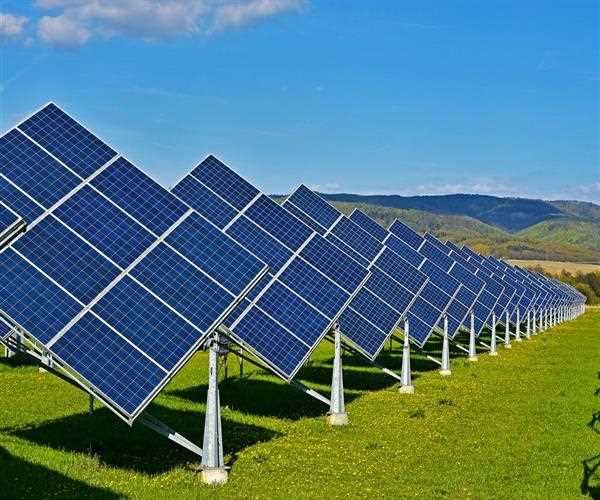
09-May-2024 , Updated on 5/9/2024 10:31:46 PM
Future Scope of Solar Energy in India
The geographical and climate framework of India is ideal among the potential global countries for solar energy production. Gifted with the power of the sun that is nearly always present, India takes advantage of this precious asset and uses it to generate clean and sustainable energy that would otherwise be inclined to cause environmental harm.
With an unmatched national plan and hospitable natural conditions, solar revolution India has tremendous potential. This could drastically challenge the nation to rethink its energy system, which would lead to a cut in emissions and also enhance the safety of energy.
Abundant Solar Potential
India has this amount of sunshine of about 3000 hours every year, which is seen to be over 5 trillion kWh of power. Practically all of the country is recording 4-7kWh of solar radiation per square meter daily and that’s enough to place it squarely among the world’s leaders in the area of solar energy adoption.
Such fetched solar energy's capacity is in itself a great opportunity that both the public and private sectors can use to develop a renewable and scalable infrastructure, that is, one of the most sustainable energy infrastructures in the world.
Government Programs that Induce Solar Energy Activity
The Indian government has unveiled several campaigns to aid applied science in turning into an asset. The Jawaharlal Nehru National Solar Mission is paradigmatically one of the missions under the National Action Plan on Climate Change of India which makes the development of 20,000 MW of solar power by 2022.
The Greater Solar Alliance is supported with state-specific methods, especially by Gujarat's solar energy policy resulting in the generation of 1,000 MW solar. These endeavors from the government bear significant importance in preparing for a strong energy strategy focused on the reliability of green and renewable energy sources.
Regional Opportunities
Solar capacity in designated states like Rajasthan and Gujarat is high because these states have vast tracts of land that are left unexploited and also have high solar insolation levels. The Thar Desert in Rajasthan can be the best site for the establishment of solar farms because farming is estimated to yield nearly 2,100 MW of power.
Gujarat’s rules have contributed to a lot of solar development implying that the States are very crucial in India's solar carves. Through the integration of these places with the solar energy networks, there will be a promising economy, reduction of the importation of energy, and advancement of industrial development.
Solar Energy for Rural Development.
Rural regions of India, especially where electricity supply could be improving, would greatly benefit from solar applications. Solar power can supply almost round-the-clock electricity to the end user who has replaced traditional biomass with it, which has enabled a better quality of life. For example, solar pumps have been installed in community wells to provide clean water, and streets have been illuminated by lights powered by renewable energy.
Solar energy resources can modify the traditional village way of living using the providing of drinking water, enhancing the nighttime safety through illumination of streets, and creating new possibilities for generating income for the villagers.
Economic and Environmental Benefits
Implementing solar technology can bring economic benefits like cutting fuel importation and reducing electricity production and distribution costs. Environmentally, solar power is a clean alternative that releases fewer harmful substances like air pollution and greenhouse gas emissions, serving to reduce ecological impact.
Countries around the world are beginning to recognize that solar energy is the key to a greener future, and by turning to the sun, India could spearhead the transition to renewable energy, attract foreign investments, and catalyze meaningful innovation in the energy technology sphere.
The Obstacles ahead
Sensitive to these challenges, solar energy is poised to achieve its full potential in India only if these challenges are effectively addressed. Additionally, solar power can only be produced when it is sunny which forces therefore the investment in storage technologies that can ensure a stable energy supply.
These challenges call for India to invest in continuous technological innovation in the sector, attract more governmental and private investment, and create regulations and policies that will facilitate, rather than impede, the adaptation of solar energy.
Conclusion
India's solar legacy is promising, with grand plans to realize the unused solar ability to the fullest extent. By addressing the current hurdles and by implementing supportive policies further India also can satisfy the energy needs sustainably beyond even that. Moreover, India can also lead as a global role model in renewable energy adoption.
The quest to create a cleaner and safer future powered by renewable sources of energy is now underway. The future is here, and it looks green in hue. With the rise of this sector, it will become the principle driving force to the change of the economic and environmental panorama of India.

Student
An MBA in finance imparts and improves management aptitude, inventive ability, critical thinking ability, and so forth. It offers a real-time experience that fabricates a staunch career foundation for students and working professionals. It helps them to thoroughly understand the financial sector.
Join Our Newsletter
Subscribe to our newsletter to receive emails about new views posts, releases and updates.
Copyright 2010 - 2025 MindStick Software Pvt. Ltd. All Rights Reserved Privacy Policy | Terms & Conditions | Cookie Policy